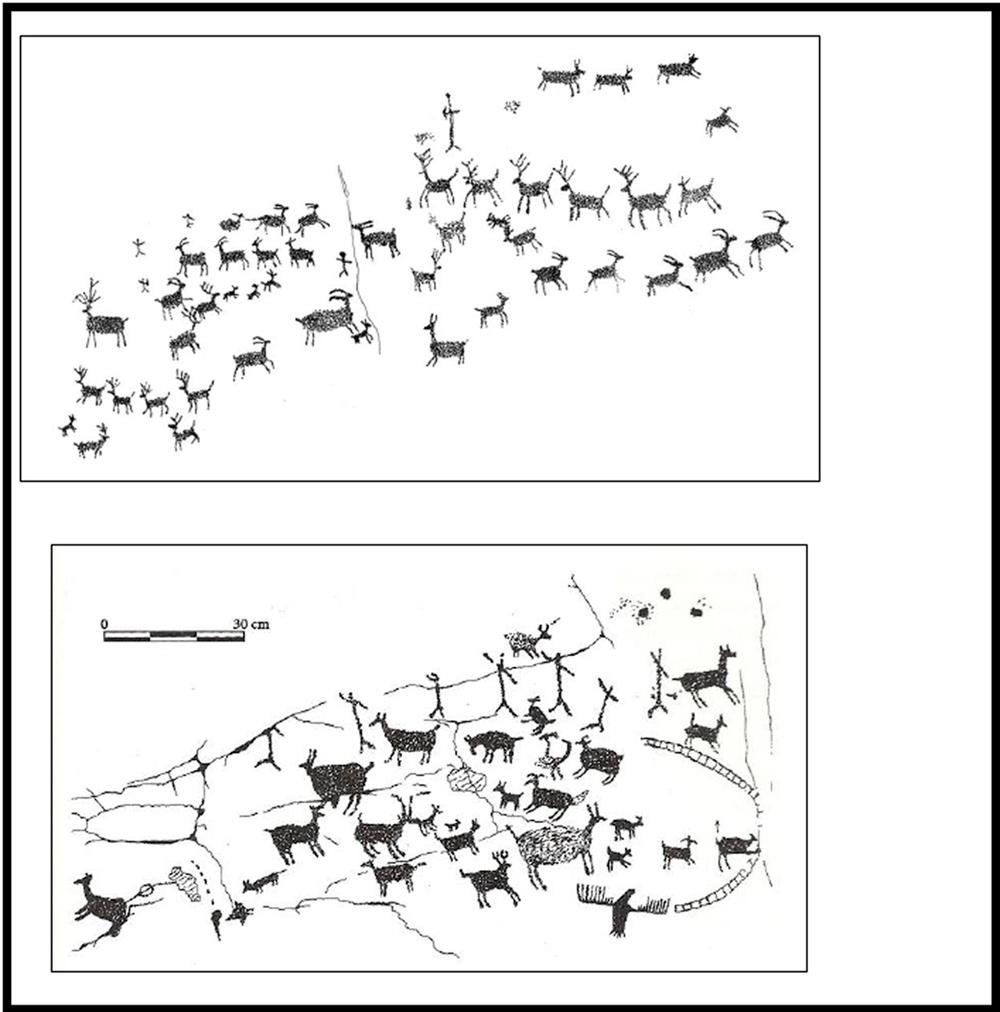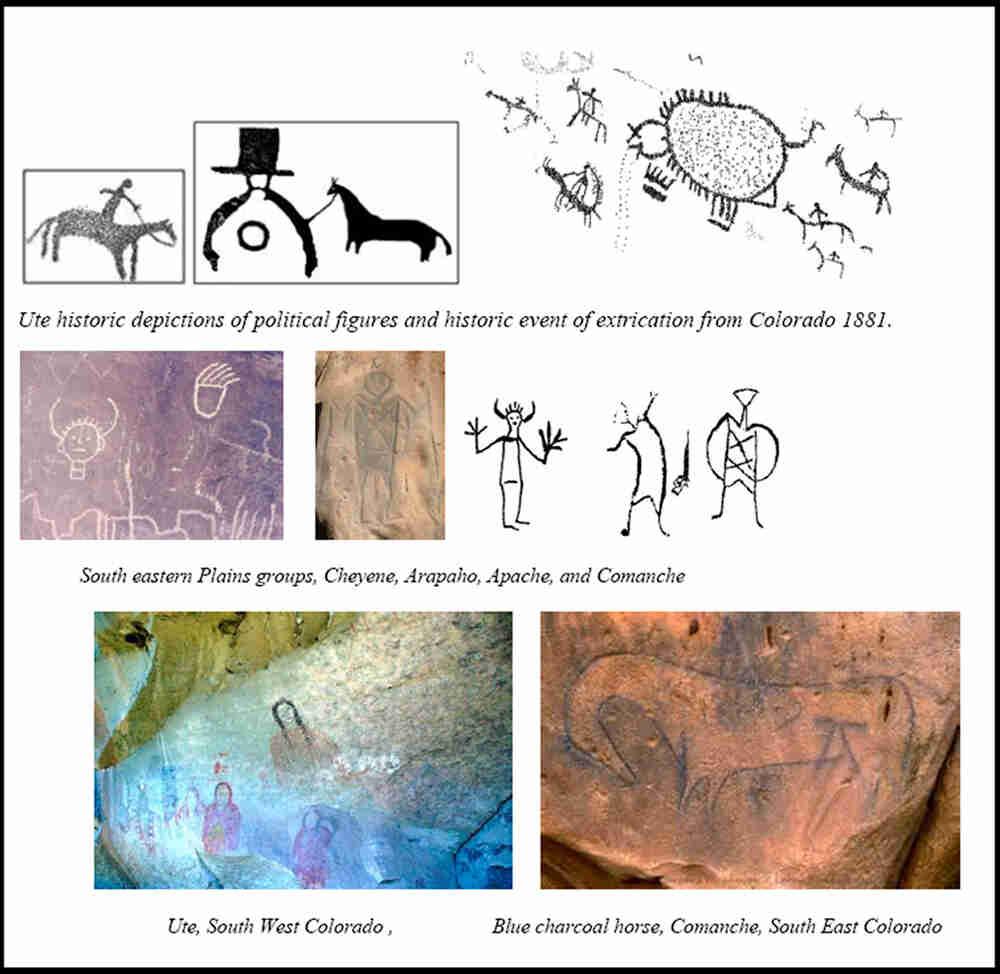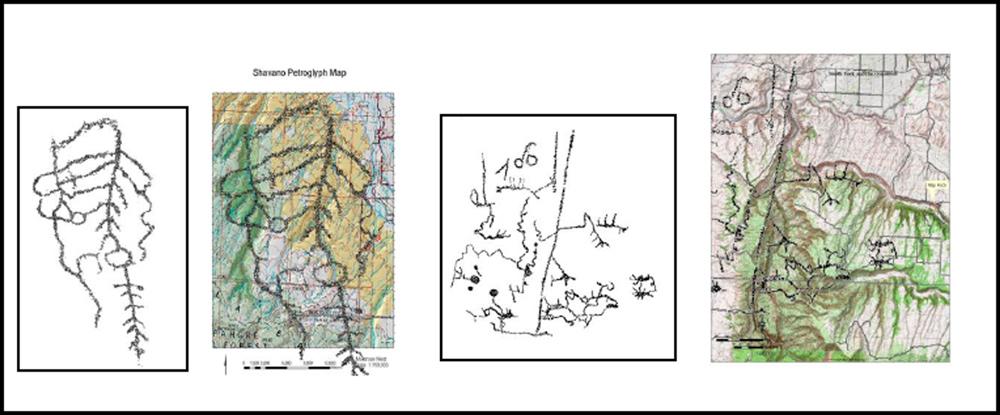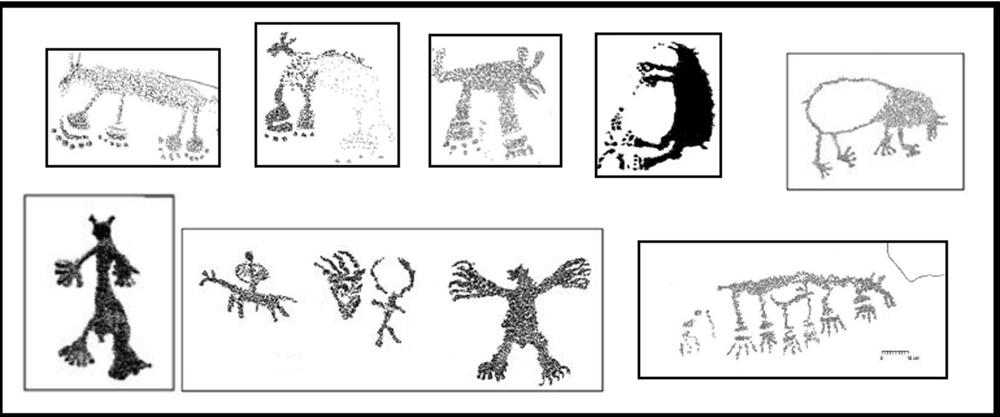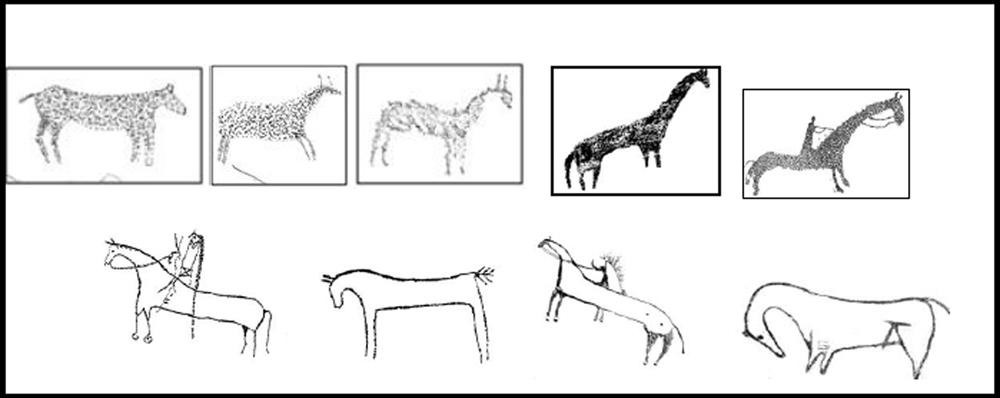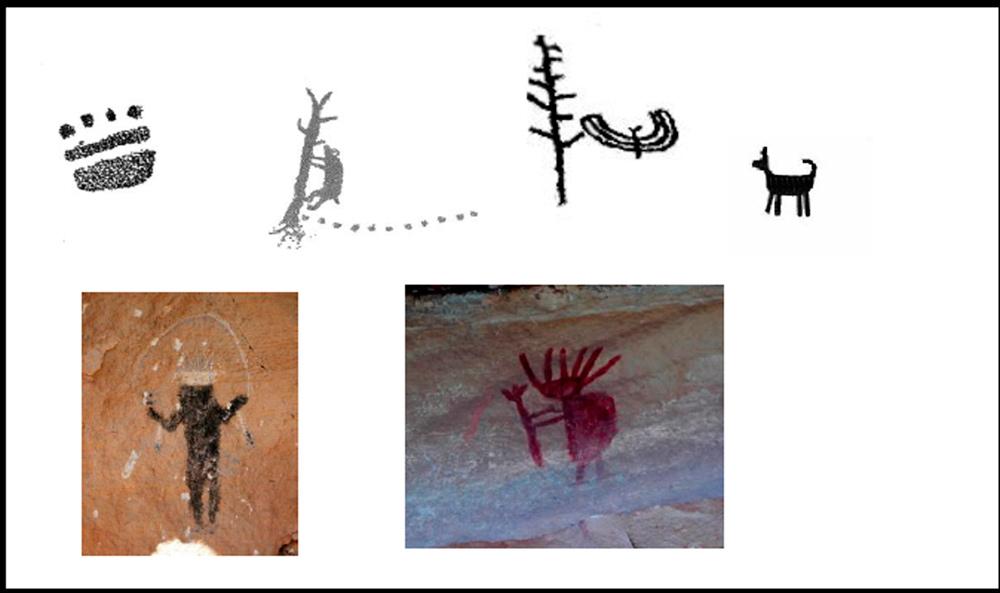Rock Art of Colorado
Full Article
Colorado is home to a rich variety of prehistoric and historic art carved on cliff sides and boulders. Most rock art is found in river basins. The mountain areas that cut a wide vertical swath through the state are relatively devoid of rock art. There are the two types of rock art: pecked art, which is called petroglyphs, and paintings, which are called pictographs. Native Americans frequently refer to the figures as “Indian writings” and were able to read and write them on rocks for thousands of years. After European settlement, tribal relocations, and generations of boarding schools, most of the tribal knowledge of what the rock art means has been lost.
Colorado has a substantial amount of rock art categorized within four general time periods: the Archaic, Formative, Protohistoric, and Historic. Each time period has several styles that can be identified, differing by region. Rock art from the Archaic period is rare and often so faded that it is barely visible. The Formative era produced many distinct styles that are specific to certain regions of the state. The Protohistoric and Historic eras have styles and cultural affiliations with Native American cultures. In the western half of the state, the Numic tribes (Shoshone, Ute, and Paiute) dominated the region from the late 1500s to 1880s. On the eastern plains the rock art has cultural affiliations with the Apache, Cheyenne, Arapaho, Kiowa, and Comanche, who moved across the northern, eastern, and southern plains of Colorado from the 1700s through the 1860s.
Methodology and Interpretation: How old is it and what does it mean?
Rock art is difficult to date and place within established archaeological chronologies. Age estimations are based on style, weathering effects to the rock surface, and direct dating if possible with relative dates from soils and archaeological material associated with the panels. A chronology of styles is based upon a large database of sites throughout the state. At the time of contact with Europeans, early explorers—and, later, anthropologists—collected ethnographic information from Native Americans; anthropologists use this information to interpret historic petroglyphs through a method called ethnographic analogy. Interpretations of rock art based on archaeology and ethnography include depictions of game drives, battle scenes, geographic maps, and tribal ceremonies. Native American consultants have suggested that some rock art images may represent spiritual entities, rain or cloud deities, spirits of the deceased, or symbols of mythic characters and religious themes from their cultures.
Archaic period (3000 BC–AD 400)
During the Archaic era, animals are often depicted with long tapering legs and a large body, and with great branching horns. They are often found in context with anthropomorphs that are thin and tall and have long arms. Atlatls are portrayed during this era. Animals have cloven feet and sometimes show the dewclaws in profile (as if flattened out on either side of the foot). During this era, animals are portrayed as larger than humans, which may be a reflection of the Archaic worldview, in which game animals were the central focus.
Formative Period (200 BC–AD 1300)
During the Formative era there is a transition to body shapes for game animals characterized by the short-legged, round-bodied quadrupeds with smaller horns or antlers. During this period the animals also become smaller and the humans more animated. Atlatls wane as bows and arrows take center stage. Game drives are shown with animated stick figures making the “driving” gesture while other figures are aiming arrows with bows at the advancing animals.
The Ancestral Pueblo rock art found in the southwestern portion of the state is typified by Pueblo hairstyles and sometimes square body styles. In contrast, in the northwestern portion of the state, Fremont-style figures have V-shaped or trapezoidal bodies and occasionally horns or elaborate headdresses.
Protohistoric period (AD 1300–1700)
During the Protohistoric period, it is possible to determine Numic (Ute and Paiute) from Ancestral Pueblo by their body style and cultural symbol affiliations. For the Numic, game animals, trail maps, bear paws, and tree images are consistent with this style. During the later Protohistoric era, body shapes become abbreviated into stick figures with bows. The Ancestral Puebloans emigrated from Colorado by around AD 1300 and are not present in the Protohistoric and Historic eras. Through the next four centuries, the Numic people spread out across Colorado, with the Ute inhabiting the high country and inner mountains and the Paiute remaining in the canyons and desert areas of southern Colorado and eastern Utah. Shoshones inhabited the northwestern areas of Colorado but remained mostly in Wyoming. The Comanche split off from this Shoshonean linguistic group around the 1700s and moved out onto the northern plains of Colorado. Algonquians (Cheyenne and Arapaho) moved westward into the Colorado plains, pushing the Comanche south across the eastern plains along with the Kiowa and Apache.
Historic Era (AD 1700–1900)
With the introduction of the horse, many native peoples adapted to an equestrian lifestyle. Along with horses came mobility, wealth, trading capacities, and power. Horses are a constant in the eastern Plains Indian rock art, as well as tipis, bison hunts, and tribal battles, while in the west the Ute historic rock art features cowboy hats, fringed leggings, top hats, and peace medallions that were popular around the time of Lincoln’s presidency and the beginning of the reservation period.
The Numic traditions witnessed the spread of Shoshonean people throughout the Colorado Plateau. The distinction between Utes and Paiutes can be traced to the ability to support a horse culture. Large pedestrian shields could not be accommodated on horseback. It is suggested that pedestrian figures holding large shields may have been Paiutes and that mounted figures with small shields were Utes. The Utes dominated the Uncompahgre Plateau but intrusions by Paiutes from the San Juan Basin were common.
Maps
The Numic tradition is characteristic of a hunter-gatherer lifestyle that relies heavily on knowledge of game trails, hunting strategies, procurement of wild foods, and knowing the location of good water sources. Many petroglyph panels are found to depict maps of the trails that navigate the local and difficult terrains. They may describe game drive strategies as well as locations of springs and water sources and other resources. Examples of petroglyph maps can be found at the Shavano Valley Petroglyph site and at Map Rock in the Smith Fork of the Gunnison.
The Utes are oriented to the south, in contrast with Europeans, who orient their maps to the north. To the Utes, the south is where the sun comes from and sunrise direction from east to west (clockwise) is the preferred direction of travel. Figure 5 is a direct overlay showing how closely the petroglyph map fits over the physical land features to the south of the panel location.
Conceptual Realism
Other panels show the stylistic form of bear paws and bears with square heads, short ears, and a curved back. The paws are flexed so that all the toes are shown. This technique is referred to as “conceptual realism.” It is used to emphasize the important parts of an animal for spiritual or ritual purposes; it shows what one understands rather than what one sees.
The horse was often exaggerated with a long neck and very short legs. The horse is drawn the way the author understands the animal. The long neck and foreshortened legs illustrate the way it feels to be riding a horse and looking down at its long neck in front and foreshortened legs below.
Mythograms
Colorado was home to a variety of linguistic groups that migrated through the area. Each of these groups had their own creation story and pantheon of religious deities. Some of these stories and entities were recorded by ethnographers in the late 1800s. Scholars call these systems “mythograms,” and they are used as diagnostic cultural markers in rock art.
Mythograms of the Navajo Yei gods are found in west-central Colorado. One is found at the north end of Shavano Valley in Montrose County and is painted in dark charcoal, white, and blue, colors representing the female Yei of the Mountain Way Ceremony. Another is the Navajo god Ghaan’ask’idii.
Summary
Colorado has a rich prehistoric art history representing the migrations and settlement patterns of people from Archaic hunter-gatherers to Formative-era hunter-gatherers with some agricultural influences, and finally the Protohistoric cultures that occupied the area at the time of European contact. The pictorial record shows a gradual shift from displays of large animals at river convergences and hunting vantage points to smaller animals and larger humans concurrent with a transition from atlatls to bows and arrows. Lifestyles shifted with the introduction of the horse, and the resulting mobility brought prosperity resulting in depictions of buffalo hunts, rabbit drives, and fierce battle scenes. Cognitive changes were represented in religious iconography, such as Sinavi the Ute creator depicted as a man with big hands and feet or a canine (wolf or dog), bear paws signaling the Bear Dance ceremonies for healing, and the cosmic tree of life, or shaman’s tree. On the plains, the buffalo dominated the iconography with hunts and depictions of conflicts. The Native American heritage of picture writing, or “Indian writings,” can be found in the canyons and cliff sites throughout the state of Colorado.



